|
Guest blog by Kathryn Messenger, Naturopath at Whole Naturopathy. As a naturopath, I have studied both nutrition and herbal medicine for both treating and preventing disease. Naturopathic treatment varies depending on the how individual person experiences the disease, their health history and priorities. I love using herbal medicine as each formula of 4-6 herbs is different, depending on what each person needs. Food has a powerful effect on health, both positively and negatively, and I believe in a diet high in fruit and vegetables, together with protein and healthy fats; but low in highly refined foods (such as sugar and white flour products) and food additives (colours, flavours, and preservatives). The Mediterranean diet follow this basic outline and has been studied for its health benefits. If you find foods that you enjoy, a healthy diet is easily sustainable. Here are some conditions where a naturopathic treatment could work alongside myotherapy. Fibromyalgia Vitamin D is an important nutrient for those that suffer from fibromyalgia, and studies have shown a reduction in pain with supplementation, as well as an improvement to mental health issues such as anxiety and depression. A blood test for Vitamin D gives a reference range of 50-250 nmol/L, with the lower end of this range set in order to prevent osteoporosis (spontaneous spinal fractures). I use the Functional Medicine Ranges for blood tests which are the levels which have been found in optimal health. The optimal range for vitamin D is between 100-150nmol/L. Supplementing is recommended if your levels are below 100nmol/L, especially is the winter. In the summer, try to expose arms or legs to the sun for around 15 minutes a day, depending on your skin type. Try to achieve maximum exposure with no burning or redness afterwards. Stress contributes to a wide range of health issues including fibromyalia, and I love using a group of herbal medicines called ‘adaptogens’. These herbs make you like the ‘energiser bunny’, able to just keep going. In clinical trials on athletes, they could swim or run further or for longer when taking adaptogens. They help you adapt to stress, and therefore cope better with life stressors. Lifestyle changes to reduce stress are really important, and but are even more effective when combined with these herbs. Osteoarthritis Inflammation is a big part of any arthritis, and chronic inflammation contributes to many diseases characterised by pain. Omega 3 fatty acids have been shown to reduce inflammation, the best source of these is oily fish such as salmon or mackerel, but they are also found in nuts and seeds. In order to meet the daily requirements of omega 3, it is the recommendation is to eat fish twice a week, otherwise a fish oil supplement may be of benefit. Ginger is an anti-inflammatory herb and is particularly useful in those with poor circulation. This is seen if you have cold hands or feet, as ginger will increase the blood flow not only to warm you, but to bring oxygen and nutrients to the site of the arthritis. Turmeric is another anti-inflammatory herb and has been well researched for joint pain. You could try to increase it in your diet, although a supplement may be required for adequate intake. As well as increasing anti-inflammatory foods, it’s important to reduce pro-inflammatory foods. Refined sugar is the main culprit here, which increases inflammation and should be avoided. Whilst fruit which contains natural sugars, it is also high in fibre and antioxidants which has a positive effect on health. Sugar is devoid of other nutrients required to sustain and repair. In osteoarthritis, often the collagen of the joint is deteriorated. Vitamin C is important in the formation of collagen, and bone broth or a collagen powder can help to support the joint. Protein is such an important nutrient. It is required for growth and repair of all tissues, particularly muscles. Every meal should include a source of protein: meat, fish, eggs, dairy, nuts, seeds, beans, or legumes. So much can be done to improve your health naturally. If you’re unsure if a naturopath can help with your condition, please contact me to discuss you unique health issues. 0493 294 159
Suite 1, 24/1880 Ferntree Gully Rd Mountain Gate Shopping Centre Ferntree Gully, Victoria (Inside Providence Foods) [email protected] www.wholenaturopathy.com.au Foot and heel pain can really impact your day. It can be a hard area to avoid aggravating through use and movement, for obvious reasons! A very common cause of heel pain is a condition called Plantar Fasciitis. This is an inflammatory condition of the thick connective tissues of the heel and sole of the foot.
The sensation is usually described as a sharp, stabbing feeling directly under the heel. Its generally most painful first thing in the morning, or after resting for some time. Depending on the severity, this can last anywhere from a few moments, to being felt constantly throughout the day. It can be caused by an acute injury or strain to the plantar fascia, and can also develop over time. People who are on their feet for long hours can develop this foot pain, especially if they don't have good supportive footwear. Our bodies are pretty good at finding work arounds to keep us moving, so if you're experiencing plantar fasciitis, you may notice some compensation patterns like limping, reduced ankle mobility, taking smaller steps, or toe walking to avoid pressure to your heel. Short term, these compensation patterns are fine, but if the heel pain becomes chronic then these altered movement patterns can lead to other pains further up the body. What can be done about Plantar Fasciitis?
Do you need help with heel pain? Book in with our team so we can help you with a treatment plan. Have you recently been diagnosed with bursitis, but aren’t quite sure what that means? We’ve got you covered. Here are the basics you want to know about bursitis and what can be done about it. What is bursitis?
Throughout your body, you have bursa – small fluid-filled sacs that prevent friction between your bones, tendons and muscles around your joints. Bursitis is when a bursa becomes irritated and inflamed. Bursitis commonly occurs in the shoulder, elbow or hip. However, you can experience bursitis in any bursa. The most common symptoms include pain, swelling and stiffness of the joint. Pain will often increase during the night time, and becomes worse when you move the joint. What can cause bursitis? There are many factors that can cause or contribute to bursitis. Some of the most common include:
How is bursitis diagnosed? This depends on who you see. Any health professional will take a case history and do a physical examination. If you seek help from your doctor, they may order imaging tests to rule out other problems that might be causing your symptoms, or they may order a test of the fluid from your bursa to see if there is an infection. How is bursitis treated? The focus of bursitis treatment depends on what caused the problem in the first place. But it’s likely that treating your bursitis will include:
If the cause is an infection, your doctor may prescribe antibiotics to resolve the infection. A small percentage of people may be recommended surgery if other treatments have been unsuccessful. How myotherapy can help with bursitis When it comes to bursitis, there are a few steps that your myotherapist will take. Firstly, we will assess the joint itself for swelling, inflammation, pain and movement. Once we know what we’re working with, we’ll put together a treatment plan to address the issues. A treatment plan for bursitis often includes:
Another useful therapy that may be discussed is hydrotherapy – exercises and movements performed in warm water. This can reduce pressure on the joint, making therapeutic movements easier and less painful. If you’re dealing with bursitis, the team at Simple Wellness Myotherapy are here to help. To book an appointment with one of our qualified myotherapists, click here. Have you ever been diagnosed with bursitis? It’s one of the most common injuries I see in clients. But you don’t have to just put up with the pain – there are ways that myotherapy can help. What is bursitis?
Simply put, bursitis is the inflammation of the bursa. Bursa are the soft fluid-filled cushion sacs that protect the bones, tendons and muscles around the joints. When they are functioning properly, they make it easy for tendons and muscles to move smoothly at the joint. When these fluid-y sacs become inflamed, they get swollen and enlarged, which can make movement difficult due to the physical space the bursa now takes up in the joint. The inflammation process also increases sensitivity in the area, giving you that familiar feeling of pain and aching in the joint. You have over 150 bursa throughout your body, so that is more than 150 places bursitis can occur. That being said, the most common bursitis I see is in the shoulder and hip joints. Less common locations include the toes, knees and elbows. What can cause bursitis? There are a number of factors that can cause or lead to bursitis. The most common are injuries, repeated pressure and overuse of a joint. But there are some chronic conditions that can lead to bursitis such as diabetes, rheumatoid arthritis and even an infection that reaches the bursa. What are the signs and symptoms of bursitis? The most common symptoms you’ll come across are:
What is the medical treatment for bursitis? Most of the time, doctors will refer you onto a musculoskeletal therapist such as a physiotherapist, osteopath or myotherapist (like me!) In severe cases, they will do an injection of cortisone, an anti-inflammatory steroid, into the joint. Although this can make you feel better temporarily, it is a bit of a bandaid approach. If you don’t remove the cause of the bursitis, you’ll have to keep getting a giant needle into the joint – ouch! Cortisone injections aren’t a guaranteed fix, and can have a limited time of effect from very short term (days or weeks) to longer term relief (months or years). Some patients may not get any relief at all, even temporary. I always like to remind people who are considering the injection that my opinion is a biased one – I tend to only see the people who the cortisone shot hasn’t worked for, because if it works, they don’t need to come back for treatment for that same bursitis issue! How can a myotherapist help with bursitis? Wanting to avoid the big needle into the joint or just prefer to manage your condition naturally? A myotherapist like myself can work on the acute pain and address the causes behind the bursitis. There are plenty of ways that the different techniques of myotherapy can help, including::
By working on the aggravating factors and finding ways to modify them, we can reduce the pain and inflammation over the long-term. Is the pain of bursitis holding you back from the things you love to do? Book an appointment today and we’ll get you back on track to health Everyone has experienced pain at one time or another. But pain is personal – each of us experiences pain differently. Some of us feel it very intensely, and others not so much. This is because pain depends not only on what happens to your body, but also how your brain responds to it. This is what is known as the Pain Matrix. What is the Pain Matrix?
This matrix processes information from the nerves that tell us when we’re in danger or injured. It responds by increasing or decreasing our sensitivity to these messages. These changes – known as top-down regulation – control how intensely we feel pain. The Pain Matrix involves different areas of the brain that control emotions, behaviour, movement, perception and thoughts. So it’s no surprise that when you’re in pain, all of these different factors can change. How does the Pain Matrix work? There are two main changes that the Pain Matrix can induce. Anti-nociception is a reduction in sensitivity to pain, whereas pro-nociception is an increase. Anti-nociception uses the body’s natural painkillers – endorphins – to block the danger signal and decrease the pain response. Ever seen someone injure themselves in a dangerous situation, like in a car accident, but they can still move to safety without feeling pain? This is because a rush of endorphins temporarily blocks out the message of danger so they can get to safety. On the other hand, pro-nociception is usually due to swelling and chemical changes in the nerve endings around an injury. Have you ever had a bad paper-cut? Your sensitivity is much higher around the cut, even if you’re not touching the injured part. Sometimes, even moving the other fingers can hurt. Changes in the brain = changes in the pain Despite what we used to believe, the brain can continually change its form and function as a form of adaptation. These changes are known as Neuroplasticity. Nerve pathways can physical alter by increasing or reducing the number of connections. Or they can alter the release of neurotransmitters – more stimulating neurotransmitters means more nerve activity, which can increase the sensitivity of the system. When it comes to chronic pain conditions, the central nervous system is reorganised. This can include damage to nerves, leading to abnormal connections between them. Pain is more likely to occur than not, as pro-nociception increases and anti-nociception is impaired. This can lead to exaggerated responses to pain including pain caused by non-painful experiences - this is known as allodynia, and can be a common symptom in conditions like Fibromyalgia. Long term inflammation can lead to a heightened sensitivity of the nervous system. In the presence of inflammation the amount of nerve stimulation needed to send the signal decreases and the nerve firing rate increases. With so many danger messages coming in when there is inflammation present, the nervous system starts to respond on high alert by using its protective mechanism - pain! Controlling the pain There is no one size fits all approach to controlling pain, but theres increasing evidence that changes to pain intensity can be influenced by more than just the incoming messages from our tissue - it can also be influenced by our perceptions of danger and safety. This is likely due to the pain matrixes involvement in areas of the brain that deal with emotions, behaviours and thoughts. Pain experts Dr Lorimer Moseley and Dr David Butler of the NOI Group have published a fantastic book called Explain Pain that describes DIMs and SIMs - that is, Danger In Me (DIMs) and Safety In Me (SIMs). They say that any credible indication of danger can increase your perception of pain, and likewise a credible indication of safety can decrease the pain. We'll dive deeper into this research in future blogs. The Gate Control Theory involves a more physical approach to pain control. Have you ever bumped into something, then rubbed the area to make it hurt less? The Gate Control Theory is that non-painful sensations such as pressure can block or override the danger messages and reduce pain. The nerves that tell us about pressure are faster and more effective than those that tell us about danger. This might be part of why something like a good massage session helps with pain. Massage is also a great way to stimulate some feel-good endorphins, which promotes anti-nociception to reduce painful sensations! If you’re looking to minimise your pain, a combination of massage, exercise therapy and other myotherapy treatments can help. Have a look at my online booking calendar to book in for an appointment. Nobody likes to feel sore and achey all the time. If you experience chronic pain, it can contribute to many other conditions and sabotage your mental health. But if you’re looking for natural ways to relieve pain, the first place to look to is your diet. My good friend and incredible Nutritionist, Sam Gemmell, has taken the time to write this guest blog to explain more. Oily fish
Fatty fish are a potent source of omega-3 fatty acids, which are naturally anti-inflammatory. Most studies that have been published focus on omega-3 supplements. But there are small studies that support consuming it as part of the diet as well. One showed that consuming fatty fish 4 times per week can reduce inflammatory compounds in the body. 3-4 serves of oily fish per week is a good number to aim for. If you prefer plant-based sources, include walnuts, chia seeds, flaxseeds and hemp seeds daily to reap the benefits. Olive oil Looking for a healthy source of fat to include in your diet? High quality olive oil has properties that may help to reduce joint-related symptoms. One animal study showed that extra-virgin olive oil reduced joint swelling, slowed the destruction of cartilage and reduced inflammation. But don’t worry – the benefits are for people as well! One study showed that people who consume olive oil are less likely to have rheumatoid arthritis. Olive oil can be drizzled over salads, or used to sauté ingredients. But it's not great for deep frying - deep frying isn't good for you anyway! Berries Berries are the best fruit ever, at least in my opinion! They are chock-full of nutrients including vitamins, minerals and antioxidants that can help to reduce inflammation naturally. One study showed that people who ate at least two servings of strawberries per week were 14% less likely to have elevated inflammatory markers. Researchers also suggest that blueberries and strawberries may offer protection against arthritis. Want to up your berry intake? Chuck them in your smoothies, porridge, salads or just straight into your mouth. Spices Spice things up in the kitchen! Pretty much any herb or spice will have antioxidant and anti-inflammatory properties. But if we’re going to play favourites, turmeric and ginger are bestfor sore joints and arthritis. There are many research studies that show supplementing with turmeric can be beneficial for arthritis. But adding it into your diet can still help as well! Turmeric is not well absorbed, so the best consume it is with a source of good fats and some black pepper. Research into turmeric and ginger has shown that both have anti-arthritic effects. How to use them? It’s simple – sprinkle your favourites spices everywhere! Turmeric and ginger can be added to sweet and savoury dishes. Tart cherry juice Tart cherries are packed full of antioxidants that can support your joint health. One study looking at osteoarthritis showed that consuming 475ml of tart cherry juice daily significantly reduced symptoms and inflammation. Tart cherry juice can also reduce inflammatory markers. But the benefits don't stop there. Tart cherry juice is also a natural source of melatonin, which is needed for deep, restful sleep. If you’re not getting quality sleep, your body can’t repair damage effectively, which can exacerbate pain. Ready to get into tart cherry juice? Make sure you choose an unsweetened variety. Otherwise, a lot of the benefits will be cancelled out by excess sugar. Green tea Don’t get me wrong, I love my coffee. But green tea is king when it comes to caffeine-containing beverages if you’re in pain. Green tea contains a potent antioxidant known as ECGC. ECGC has been shown to reduce inflammatory cytokines in research. And although trials are in the early stages, the research also suggests that it could be beneficial in reducing inflammation in osteoarthritis. I often recommend that coffee drinkers alternate between coffee and green tea – so if you drink 4 cups of coffee per day, try 2 cups of coffee and 2 cups of green tea. But if you're not big on caffeine, even one cup a day can offer health benefits. About Sam Sam is a nutritionist, health writer and wellness speaker based in Melbourne. She loves to spread knowledge about food as medicine, and is passionate about personalised nutrition. You can find out more on her website. |
Meet Our Team
We have a team of great practitioners available 7 days a week at our Rowville clinic. Archives
July 2024
Categories
All
|
Got a question about Myotherapy?
Contact Mel by phone, email or Facebook
|
Simple Wellness Myotherapy & Remedial Massage Clinic
Shop 12B 150 Kelletts Rd Rowville VIC 3178 |
Phone us on
03 8204 0970 |

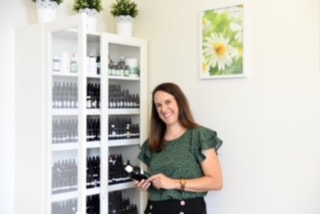
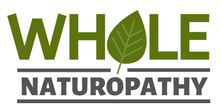
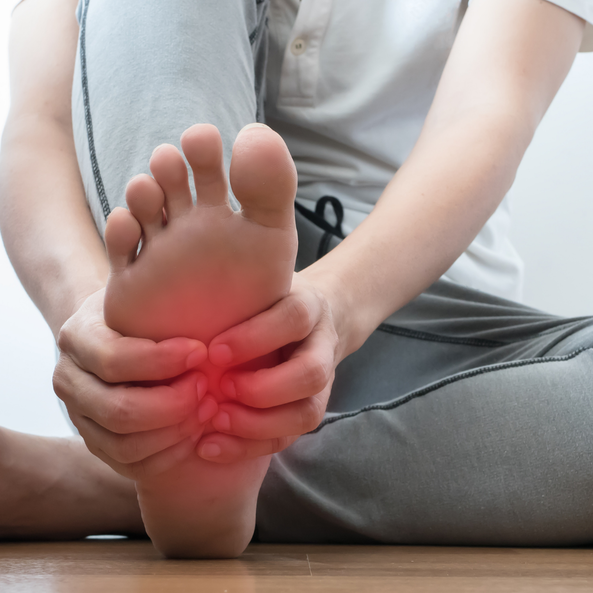

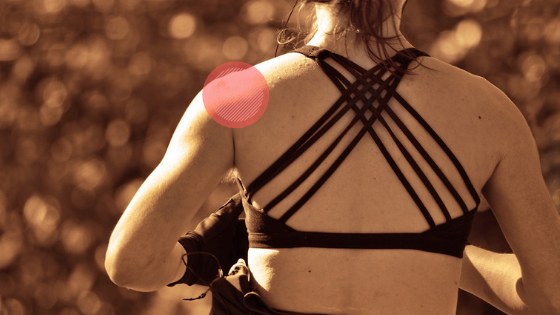
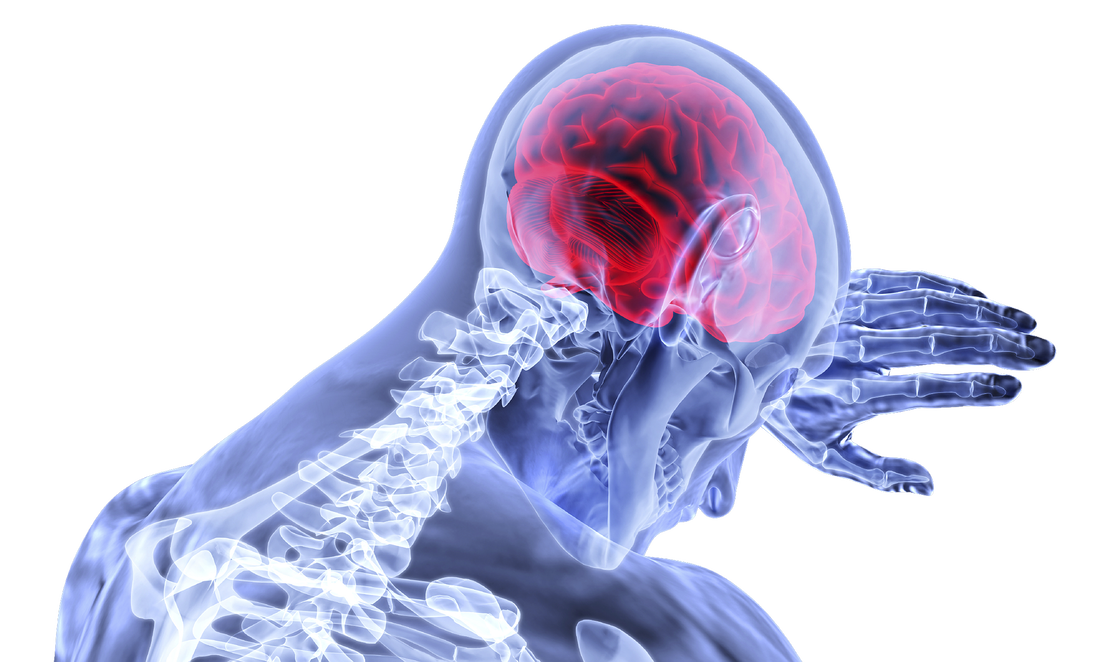
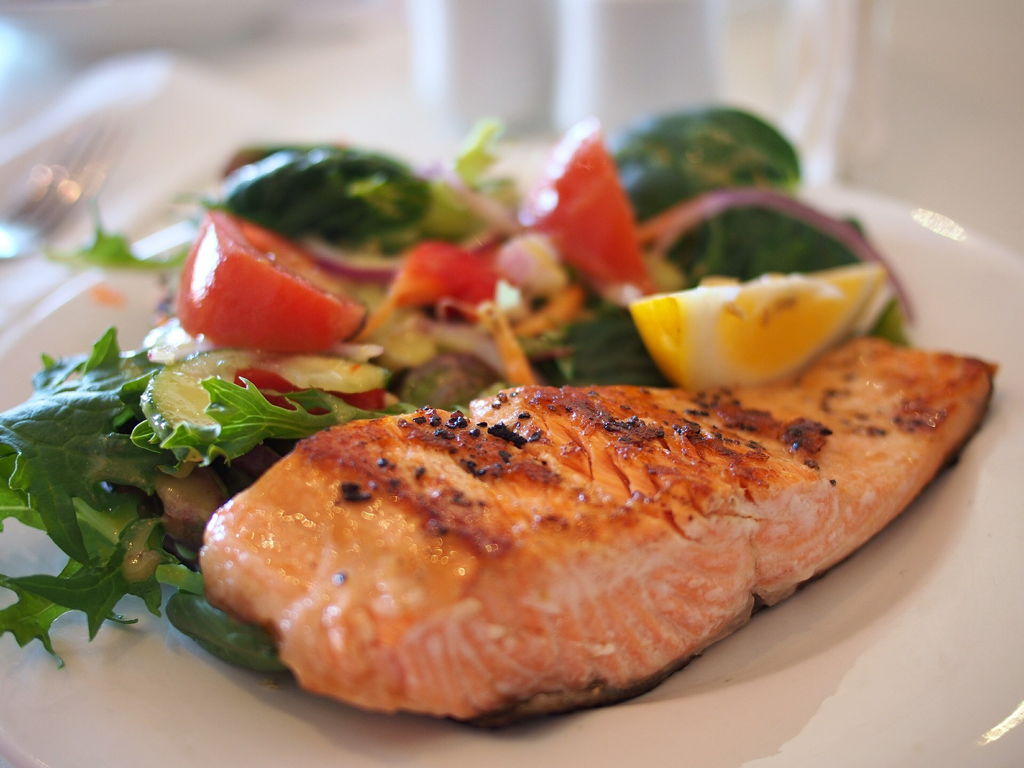
 RSS Feed
RSS Feed